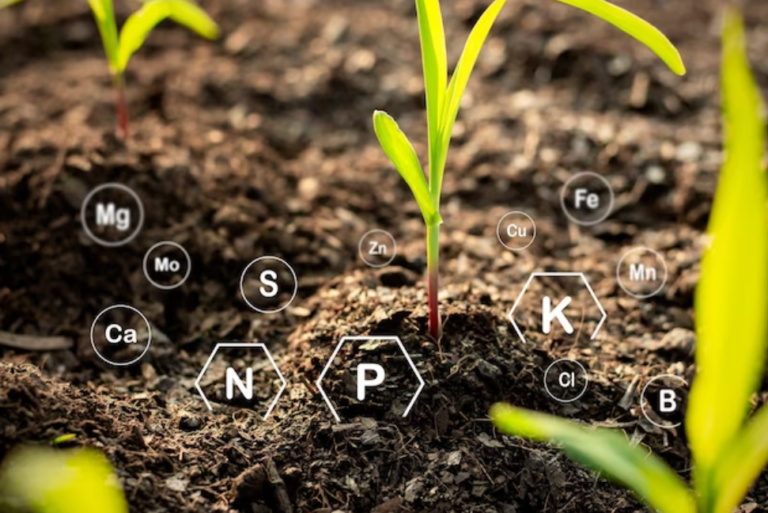A nano fertilizer can deliver nutrients more efficiently than traditional fertilizers, reducing waste and improving plant growth.
A relatively new development in fertilizers, nano fertilizers deliver nutrients to plants more effectively and efficiently than traditional fertilizers. Nano fertilizers are composed of tiny particles with dimensions of one billionth of a meter or smaller. They are composed of nanonutrients, which are ultra-minute particles of nutrient ions. Plants grow better and produce more when nutrients are delivered specifically to specific tissues.
Fertilizers traditionally consist of macro-sized particles that dissolve in soil and release nutrients for plants to absorb. Nanofertilizers typically have particle sizes of less than 1000 nanometers and are about 40,000 times smaller than human hair. A nanofertilizer consists of particles that are much smaller and are designed to penetrate plant tissue and deliver nutrients directly into cells.
Plant nutrients are delivered to plants more efficiently and effectively with nano fertilizers. A variety of materials can be utilized for the manufacture of nano fertilizers, including silica, zinc oxide, and carbon nanotubes. In addition to foliar spraying, seed coating, and root dipping, they can also be applied to plants through a number of different methods. Plant growth and productivity are improved by an effective targeted delivery system that ensures plants receive the nutrients in the right amounts. Agricultural productivity and sustainability can be enhanced with nano fertilizers. Using them can make fertilizers more efficient, reduce environmental pollution, and make plants more resistant to diseases and droughts.
Advantages and benefits of the nan0-fertiliser process:
Various nano fertilizers can be used, such as nanochelated micronutrient fertilizers, nanosilicon fertilizers, nanoorganic fertilizers, nanoslow-release fertilizers, and nanobiofertilizers.
Nano fertilizers offer several advantages over traditional fertilizers, including improved efficiency, reduced waste, and increased nutrient uptake. Some drawbacks of these materials, however, include potential toxicity and high production costs. Nevertheless, Nano fertilizers are considered to be having the potential to reduce environmental pollution by minimizing the amount of excess nutrients that are released into the environment.
Furthermore, nano fertilizers help plants resist environmental stressors such as droughts and diseases. Plant defense mechanisms are activated by some types of nano fertilizers, such as silicon nanoparticle fertilizers, which can increase resistance to biotic and abiotic stress.
Associated challenges and regulatory policies
A potential health risk associated with nano fertilizers is one of their concerns. Because nanoparticles are so small, soil and water systems may have difficulties accumulating them. Silver nanoparticles, for example, have been shown to have toxic effects on soil microbes and other organisms. Silica and carbon nanoparticles, however, have been found to be relatively safe. Many countries have regulations and policies governing the production, use, and disposal of nano fertilizers in order to ensure their safety.
A major consideration for the widespread adoption of nano fertilizers in agriculture is their cost-effectiveness. In spite of the higher cost of nano fertilizers, their targeted delivery system may increase efficiency and reduce waste, which might offset the higher price. Nano fertilizers are cost-effective when used in combination with certain crops and conditions. Production costs, application rates, and crop types all play a role in their cost-effectiveness.
Nano fertilizers market dynamics and key players
The nano fertilizer market is segmented on the raw materials, methods of applications and application. Based on raw materials, the market is segmented into nitrogen, silver, carbon, zinc and others. Based on the methods of applications, the nano fertilizer market is segmented into a spray or foliar and soil. Based on applications, the nano fertilizer market is segmented into cereals & grains, oilseeds & pulses, fruits & vegetables and others
In recent year, EuroChem Group AG entered into exclusive discussions to buy the nitrogen business of the Borealis group. Borealis is also a melamine market leader, with plants in Austria and Germany supplying the critical raw ingredient principally to the woodworking sector. Melamine and technical nitrogen solutions are significant new business streams for EuroChem as it seeks to extend its nitrogen-based product range throughout Europe.
Some other major key players in the Nano Fertilizer market are: Indian Farmers Fertilizer Cooperative Limited Lazuriton Nano Biotechnology Co., Ltd. Fanavar Nano-Pazhoohesh Markazi Company Tropical Agrosystem India (P) Ltd. EuroChem Shan Maw Myae Trading Co., Ltd Geolife Group AG CHEMI Group, s.r.o. JU Agri Sciences Pvt. Ltd. Nano Solutions and more
Nano fertilizers are projected to grow in the coming years as chemical fertilizers are increasingly replaced by nano fertilizers. Innovative developments in nanotechnology have made it possible to synthesize nanoparticles at large scales to create nano-fertilizers. Globally, the demand for nano fertilizers is expected to grow due to the growing population over the next five years. A growing demand for crops with higher yields will further support the growth of the nano fertilizer industry worldwide.

